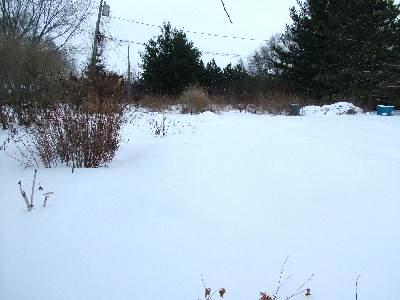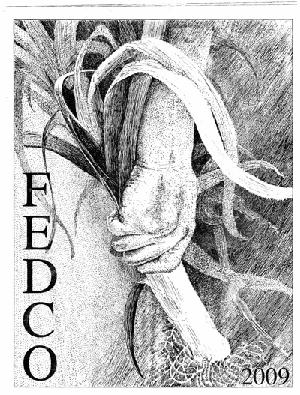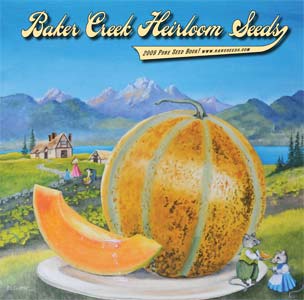It was about 20º F when I took this picture of the garden yesterday afternoon. The snow has covered up the precise delineation of the beds. I’m looking north. The raspberries are to the left. I won’t cut those back until late February. In the back center are the dried asparagus fronds in the north beds. Those aren’t cut back until a March thaw takes away the snow.
We’ve had about three feet of snow so far, but thaws have taken the snow depth back to only about a foot. Under the snow, the beds are covered in leaves. For now, I have no worries about weeds or insects. The prevailing garden issues are what new seeds to order and when do I plant my starts.
There are many excellent catalogues out there. We sell our garden tools to about fifteen seed catalogues and it would be good business if I could give all our customers some seed orders, but I’m only buying from two. That’s to keep things simple, but it’s also based on my gardening philosophy.
I’ve saved seeds almost as long as I’ve gardened. My mother and our great gardening neighbor Mrs. Martin saved seeds. For them it was an economic decision, but seed saving connects us to the cycle of life as much as anything. For tomatoes, peppers, beans and many other crops, it is close to foolproof. Cross-pollination almost never occurs. I’ve had good luck with pumpkin and squash, although those apparently are riskier. I’ve never tried to protect the blossoms or segregate crops, but I’m not re-selling my seeds, so purity is not imperative.
Many herbs also lend them selves easily to seed saving. Cilantro, dill, anise hyssop, and lemon balm are all close to weed-like in their seed propagating abilities. However, for some plants, seed saving is an elaborate and time-consuming process – alliums and coles for example. I’ve saved them, but it really is easier to start anew each year. And those are some plant types where I will often grow hybrids, even though I’m an open-pollinated grower at heart.
Growing open-pollinated seeds is in a small way, a gesture against big agriculture, and if you don’t know it, big agriculture has big problems. Our agri-business farmers are locked into a very dangerous loss of plant diversity that affects the environmental health of us and the planet. Years ago there were far more varieties of vegetables grown on a commercial basis. When it comes to crops, the gene pool is shrinking, and I’m sure that is not a good thing.
My two current champions of open pollinated seeds for home growers are Fedco, and Baker Creek Heirloom Seeds, – Fedco for their huge variety, their politics, and their excellent prices, Baker Creek for their beautiful and exotic collection of the unusual.
Fedco is a co-operative in Waterville, Maine. They’re popular with small organic farmers and they really walk-the-walk in avoiding GMO’s and those companies that try to push GMO’s.
Baker Creek is the life’s work of Jere Gettle of Mansfield, Missouri, who started his catalogue while still in high school. His company is dedicated to preserving the enormous variety of wonderful open-pollinated vegetables from around the world.
Over the next few days, I’ll take inventory of the seeds I have and go through these two catalogues to put together my 2009 seed order. I’ll also augment my starts by trading with friends, picking up some seed packs at the trade shows we do, and by buying live plants at the farmer’s market in Madison and elsewhere.
Writing about seeds is increasing my enthusiasm for the coming gardening year. This year will be the best garden I’ve ever had. Hmmm, I may have said that before.
I think, every year we plant…we plant the best garden ever…




I just wanted to let you know how much I have liked the Cobrahead tool. It is the best tool I have found with a long handle that really gets through the dirt and snags out the weeds. I can get really close to the plants without damaging the roots with it. This year I am getting the hand tool.